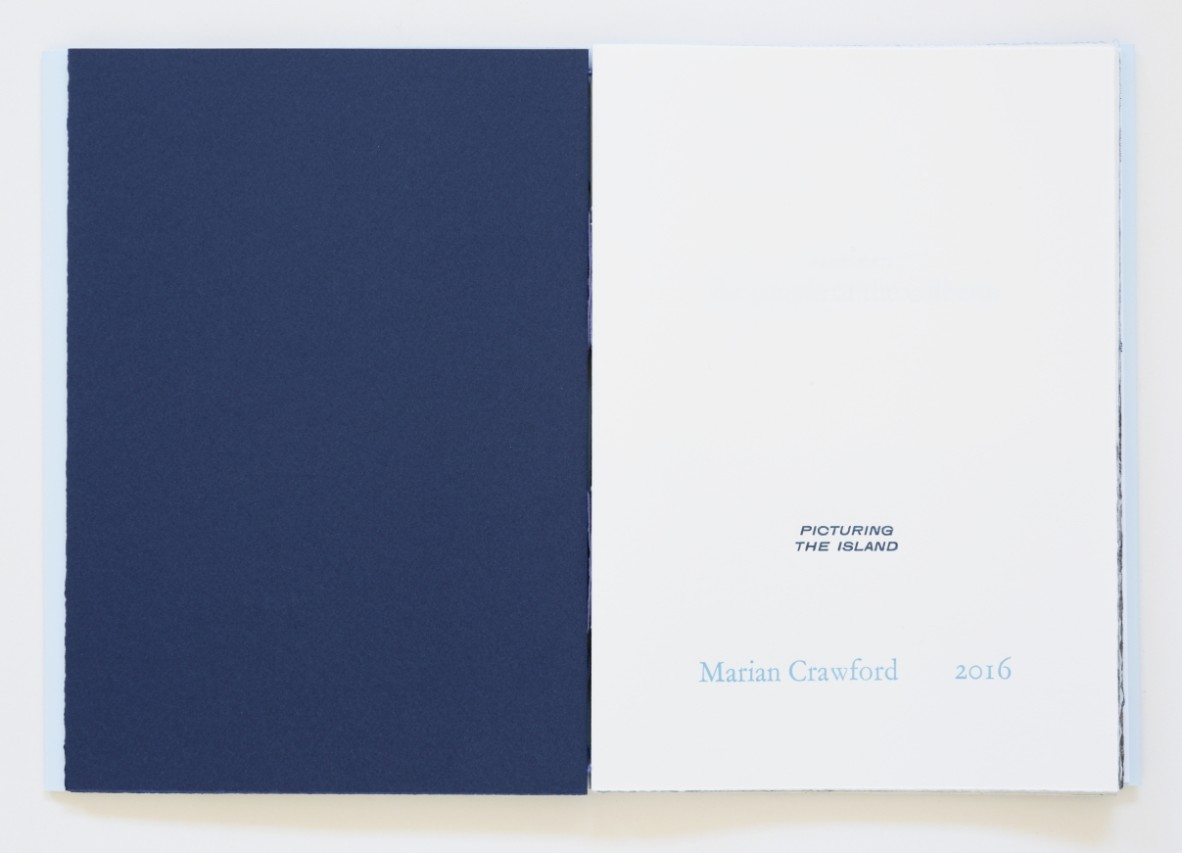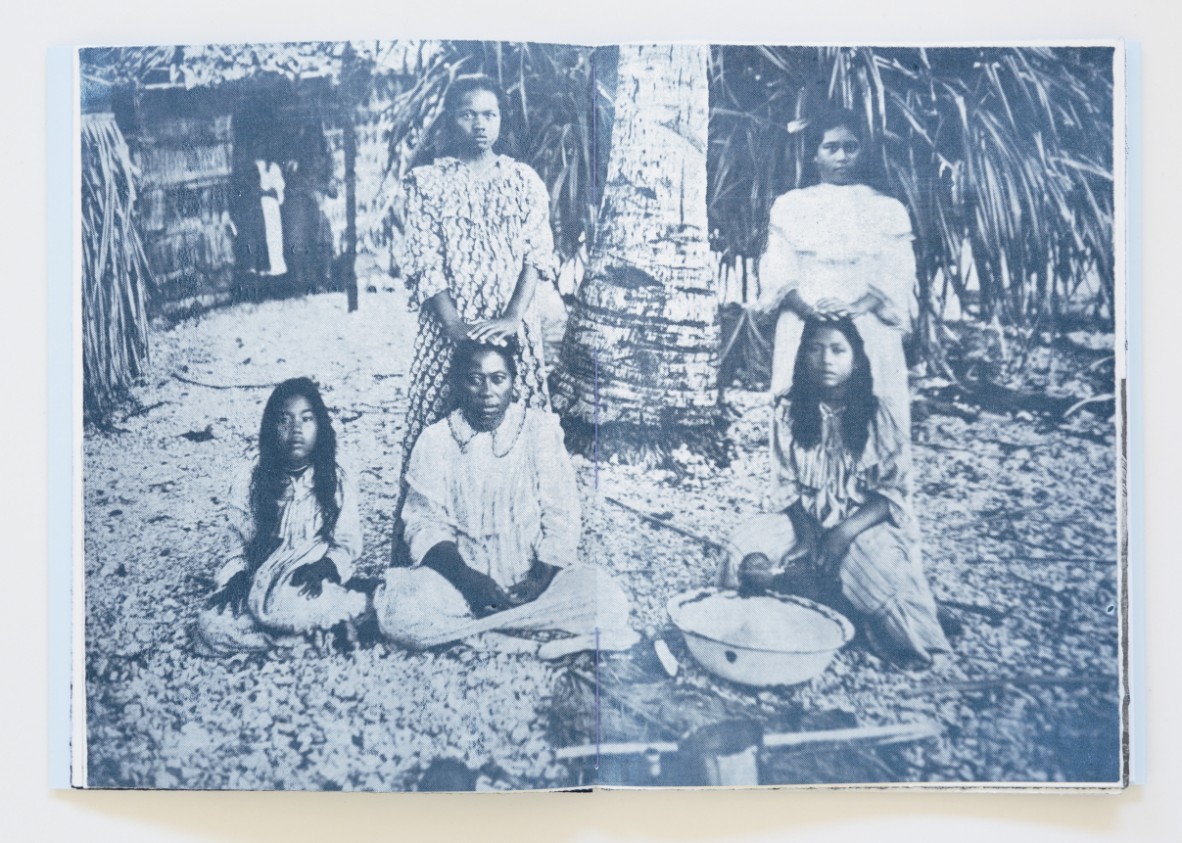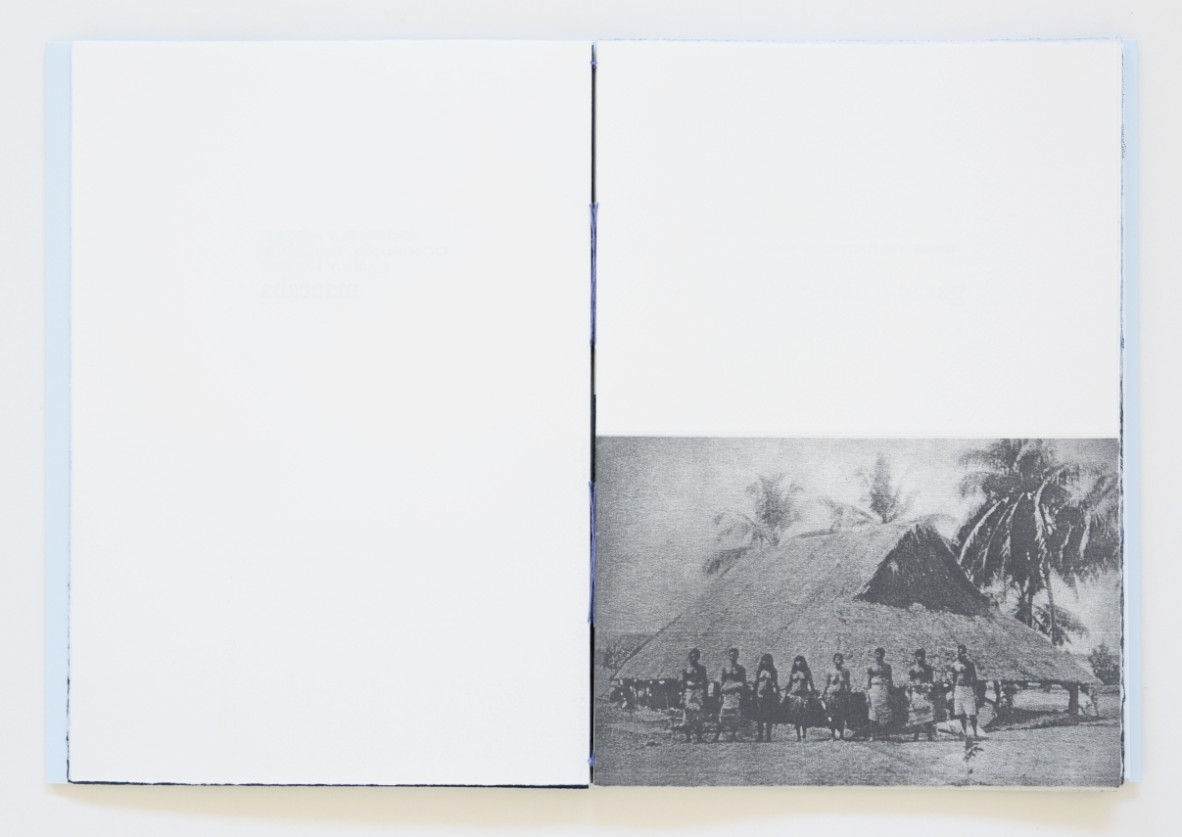Marian Crawford Dictionary / Pictionary, making ‘Picturing the Island’
By Christene Drewe | 24 October 2016
Late last month Marian delivered her artists' book 'Picturing the island' along with a companion work 'Manaeba/meeting house' which signaled the completion of her work for her Siganto Foundation Creative Fellowship. The final work is a poignant investigation of her childhood home and memories reminisced using historical documentation. Marian provides an insight into her work with this blog story.

My book ‘Picturing the Island’ takes the form of a collection of texts and images that by their proximity to each other present the Central Pacific island Banaba (once known as Ocean Island) as a recollection. This recollection grants these memories another moment of life.
I am following the precedent of the German artist Aby Warburg, whose life-work drew on the rich links between memory and time. And Warburg found powerful evidence of these links in images. His built a library which he dedicated to the Greek goddess of memory Mnemosyne, and he ‘organized (his library) conceptually and metonymically to … enable the researcher to find not only the book that he wants, but also the one that he needs’ (1). Warburg’s library was organised to reflect a gathering of associations and needs, and its reading room was oval to reflect this encircling neighbourliness of knowledge.
Pictures
Can a re-presented image, I wonder, bring the past to life? Many of the images I found in the Australian Library of Art’s collections are portraits of people in groups, staring somewhat resentfully at a photographer’s apparatus, the camera. Many were taken in the early 20th century (2) , and I re-photographed them, aiming my camera at these unsuspecting subjects yet again. I am nervous about using these images of people who are certainly no longer alive, and without searching for their relatives to ask for permission. To ameliorate this unease and hoping to excuse this breach of privacy, the last image of my book is from my own family’s collection. My mother Lesley Crawford was the photographer. My sister and I are on the beach, in our bathing suits. We lived on Banaba for just over ten years, and my childhood was spent in the sun, listening to the calls of gulls and the crash of waves breaking over the reef that surround the island. In this photograph, my sister and I are perched on a small rock, another little island, and the far boundary of the reef can be seen behind us. In contrast to the stern stares of the subjects of the other photographs in my book, my sister and I smile happily up at my mother. Perhaps here we have an illustration of the power structures of colonialism in the gulf between a willingly photographed subject and the subject of ethnographic documentation.

'Picturing the Island' also includes images of the thatched roofed maneaba, the community meeting house of I Kiribati/the Gilbertese people. To have a dwelling, a place that is your home and shelter, is an essential right that has become for some people a desperately sought privilege. Kiribati as a nation of small low-lying islands faces the prospect of loss of land and homes as a direct result of global climate change and rising sea levels. And, as a person who left my childhood home for another country at the age of 10, I sometimes wonder where I feel most at home. Artist Ian Fairweather poetically described a link between shelter, memory and his home on Queensland’s Bribie Island:
'the multiplicity of things is all contained beneath a single thatch within a single house… no memory is ever ultimately abandoned… Not even my grass hut here on Bribie… In memory I dwell there still… Its walls conceal the multiplicity of things' (3)

plus Texts
'Picturing the Island' also brings the antique print technology of type and typesetting back to life. Printed using letterpress technology, most of the texts throughout the book are drawn from a Kiribati/English dictionary based on the work on one of the first missionaries to live in Kiribati (4) . These were the tireless workers of the London Missionary Society, who took it upon themselves to print the Bible (amongst other books) setting and printing type in the very difficult and salty out-door environment of the Central Pacific. And in this context, the biblical reference which begins Fairweather’s description of his humble home on Bribie Island: In my Father’s House there are many mansions (5) (King James Bible, John 14:2) becomes doubly apt.
The texts in 'Picturing the Island' are set and printed in a mix and match of type, different fonts in a mixture of sizes, and are printed on different paper stocks. The book speaks many languages and is a dictionary of sorts, translating from one language into another, and back again. The images echo this mediation of the content, as they are all produced with digital processes employing photography, Photoshop, the darkroom, and finally printing by hand in a marriage of digital and analogue processes.
equals Many
The many voices of print culture are drawn on to mirror the many languages of contemporary Gilbertese, my work as an artist and my childhood in the colonial culture of Ocean Island.
with Thanks
I acknowledge Monash University Art Design & Architecture’s support for my research, and would like to particularly thank the Siganto Foundation, the Australian Library of Art at State Library of Queensland and the Queensland Library Foundation in providing this wonderful opportunity and generous support which enabled me to make this work 'Picturing the Island'.
- Johnson, Christopher D. Mnemosyne, meanderings through Aby Warburg’s Atlas http://warburg.library.cornell.edu/about Accessed 28 April 2016.
- The images are taken from Kreiger, Herbert W. ‘Island People of the Western Pacific, Micronesia and Melanesia.’ 1943. Washington: Smithsonian Institution War Background Studies Number Sixteen, and Matsumura, Akira. ‘Contributions to the Ethnography of Micronesia.’ Journal of the College of Science, Imperial University of Tokyo. Tokyo: Published by the University, Dec 5 1918, Vol XL., Art. 7.
- Ludlow, Peter. 2007. ‘Moreton Bay Reflections’ Queensland: Published by the author. Page 62
- See http://www.trussel.com/kir/dic/dic_a.htm ‘A combined Kiribati-English Dictionary based on the works of Hiram Bingham, D.D. and Father Ernest Sabatier, M.S.C. (translated by Sr. M. Olivia)’
- Ludlow ibid.
Comments
Your email address will not be published.
We welcome relevant, respectful comments.